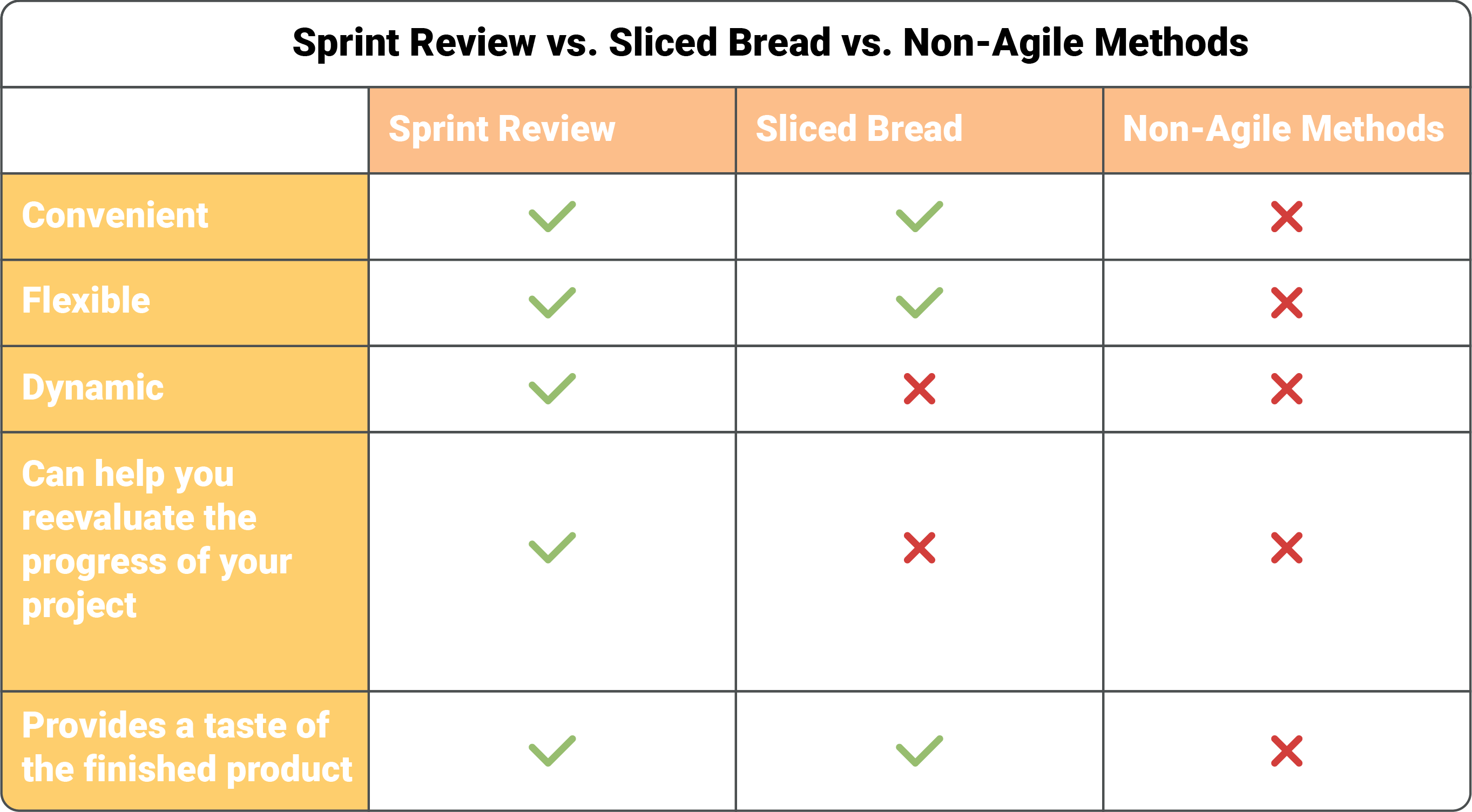According to the seventh principle of Agile development, “working software is the primary measure of progress.”
Before this revolutionary ideal, however, although customers could still in theory be kept informed on the status of their projects, it would take until the very end of a development cycle for them to finally lay eyes on a well-rounded, fully-functioning system.
Thankfully, those days are long behind us, and perhaps nothing better illustrates this point than the brilliant Sprint review — that’s “demo meeting” if you don’t speak Scrumglish.
What They Are
The idea is as simple as it is sensible: at the end of each product iteration, or Sprint, developers, product owners, stakeholders and anyone else deemed admissible gather round for a live presentation on everything achieved in the latest software release.
This is a time for teams to celebrate accomplishments, compare original goals to what has actually been developed and most importantly, receive critical feedback that will help them moving forward.
In order to qualify for a demo, work must meet the team’s highest standards of quality and be fully demonstrable. This makes Sprint reviews an exciting opportunity to not only gauge overall progress, but also evaluate usability and performance.
What They’re Not
Demo meetings, on the other hand, are not a time to revisit long-winded technical details. Instead, they ideally reveal dynamic, real-life scenarios that not only serve to showcase what a product can do, but crucially, why it can do it as well.
In this way, at every stage, customers are able to sample the true value of their product; and strikingly, should anything require any changes or improvements, they are actively encouraged to express their concerns and suggestions.
With every passing Sprint, therefore, it is actually the customer — not the development team — who will guide a project to its highest potential.
Another distinguishing factor is that Sprint reviews are never boring. So much so that it is not unusual at all for demo meetings to purposefully be kept extremely informal, as this will usually enable the most frank and honest discussions.
How They’re Done
While every demo meeting is unique, in general terms, teams will conduct these reviews by comparing an individual user story with its resulting finished product.
For example, the story “as a medical student, I want to be able to intuitively visualise all possible treatment options so that I can memorise them for my final exam” could be read aloud and later demonstrated through a tarot-like card system, in which each illustrated card corresponded to a viable treatment option.
After going through each requirement and displaying their respective results, some time may then be spent discussing the feedback that has been received. With any luck, it will serve to resolve whatever issues may have arisen and enable taking advantage of any budding opportunities.
Tally the Points
At this point, you’re probably still left wondering what compelling scientific evidence exists to finally prove once and for all that Sprint reviews are indeed the best thing ever. So it’s time to take a look at our helpful scorecard below:
As you can see, it is clear that while sliced bread certainly does fare a lot better than any available non-Agile method, it is simply no match for the Sprint review.
So although we may never understand how the humble chopped up loaf came to be synonymous with the epitome of excellence, for the benefit of our customers, we firmly believe in all twelve principles of Agile development; and for this reason, hold regular demo meetings in all of our projects.
You Can Even Be “Lazy”
Sometimes customers and stakeholders cannot attend a Sprint review meeting. In such cases, every now and then it is recommended to conduct a so-called “lazy” demo. The concept of lazy demos, also known as “asynchronous demos” or “pre-recorded” ones, involves running a full demonstration as if a customer participated, and recording it. This allows everyone who missed the event to view the presentation at their convenience, ensuring they receive the necessary information and updates no matter what. It also gives you an opportunity to watch a particularly long demo at 2x speed.




